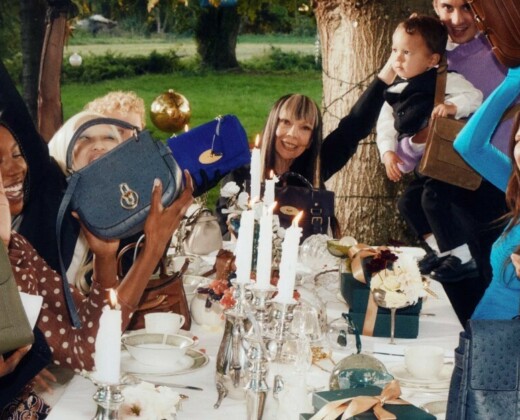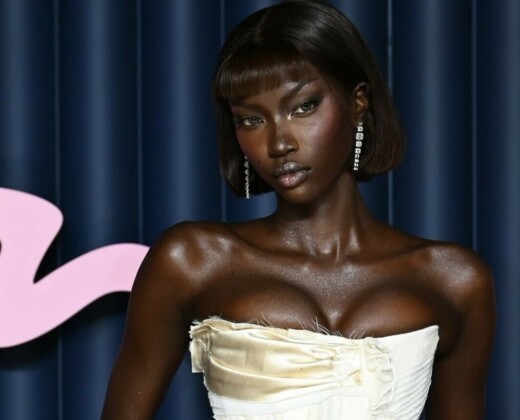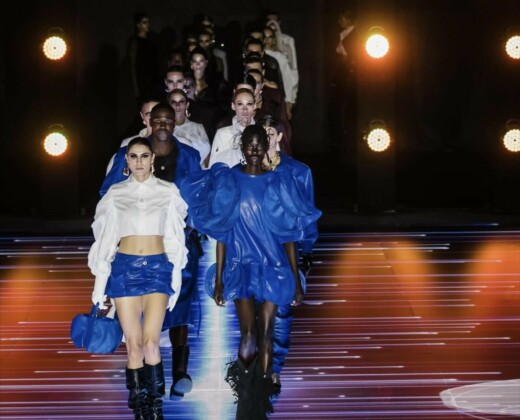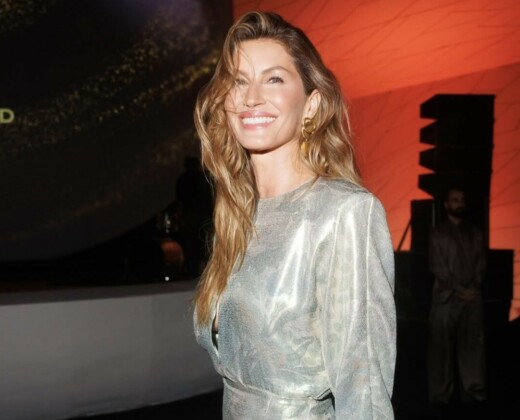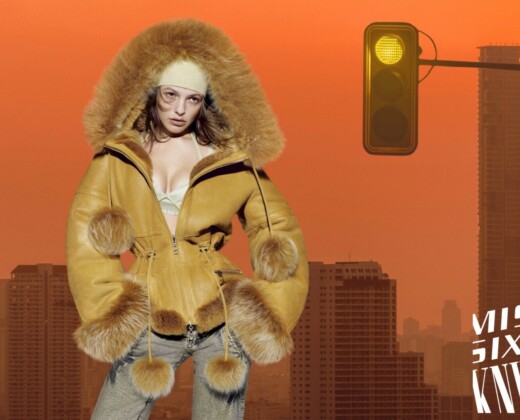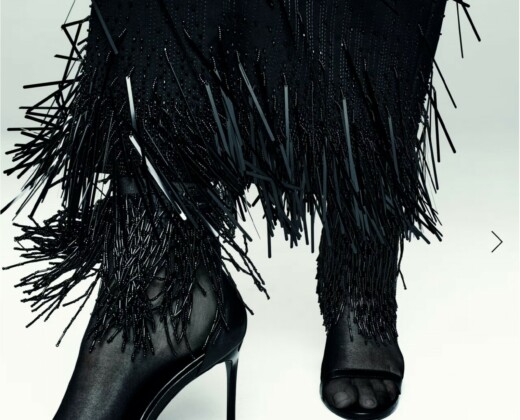He never gets out of his creative spirit. “The next day [after the show at Athens FW in April], I started the new collection, and we’ve already done half of the pieces.” And I gasp. Rarely do you meet a person who breathes with fashion so intensely, and to whom it is a source exclusively of endless joy and inspiration. The positive aura stays with us through the whole interview – Dimitris’ laughter is truly contagious – as we get on our call on a sunny September afternoon, to chat about Hounds of Love, Dimitris’ latest and upcoming collections, and why neither of us would order McDonald’s on a trip abroad.
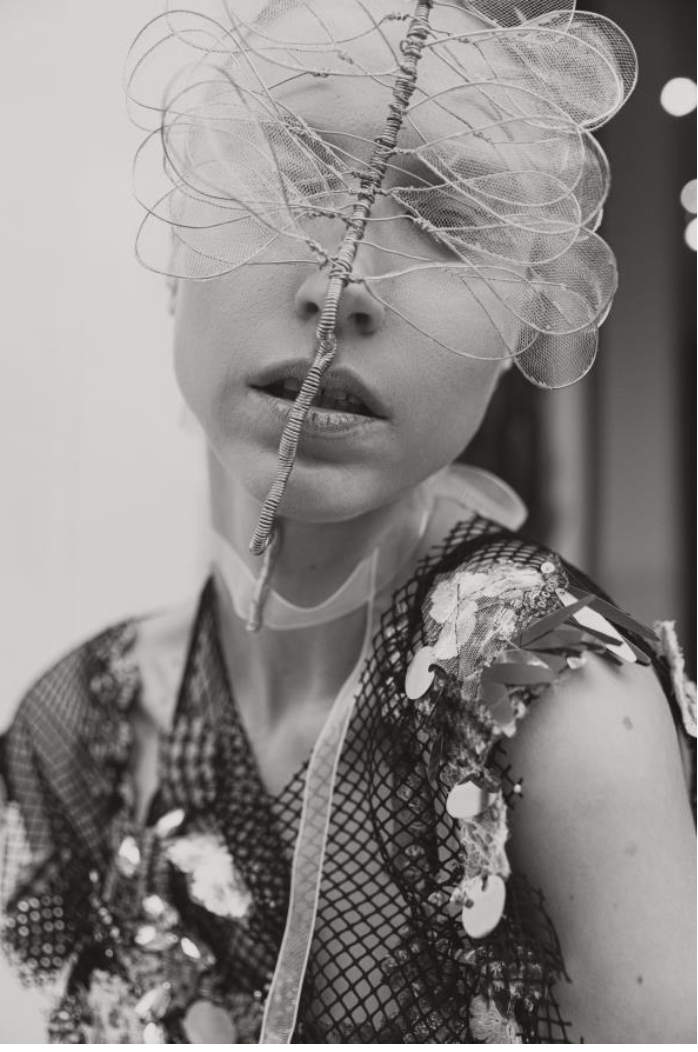
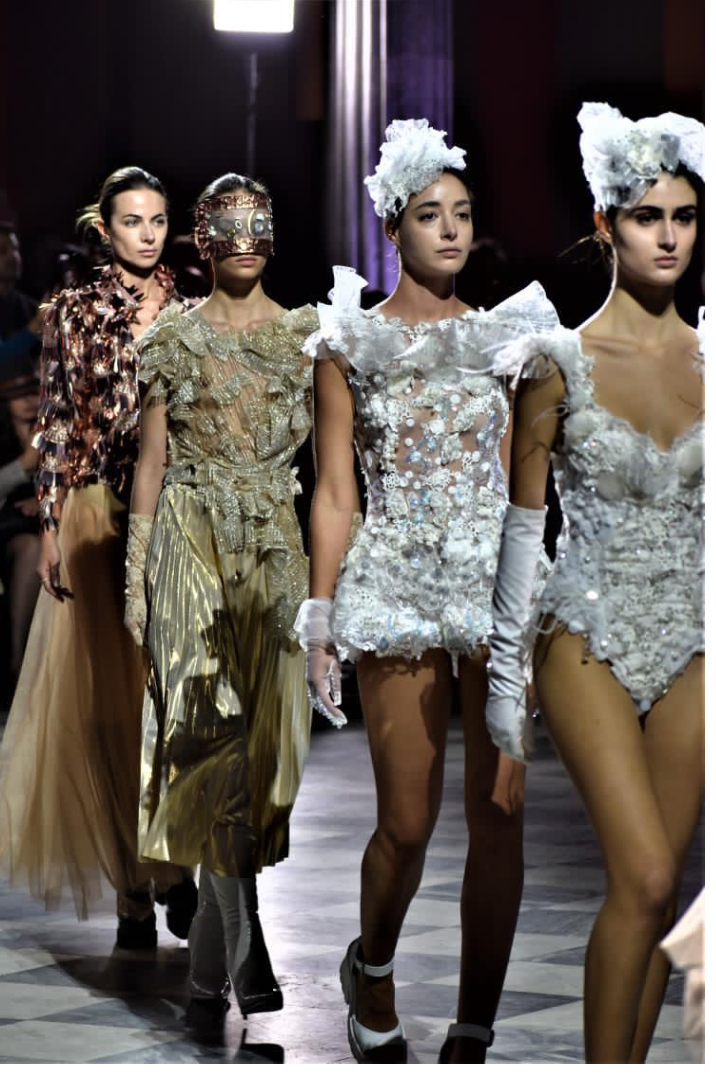
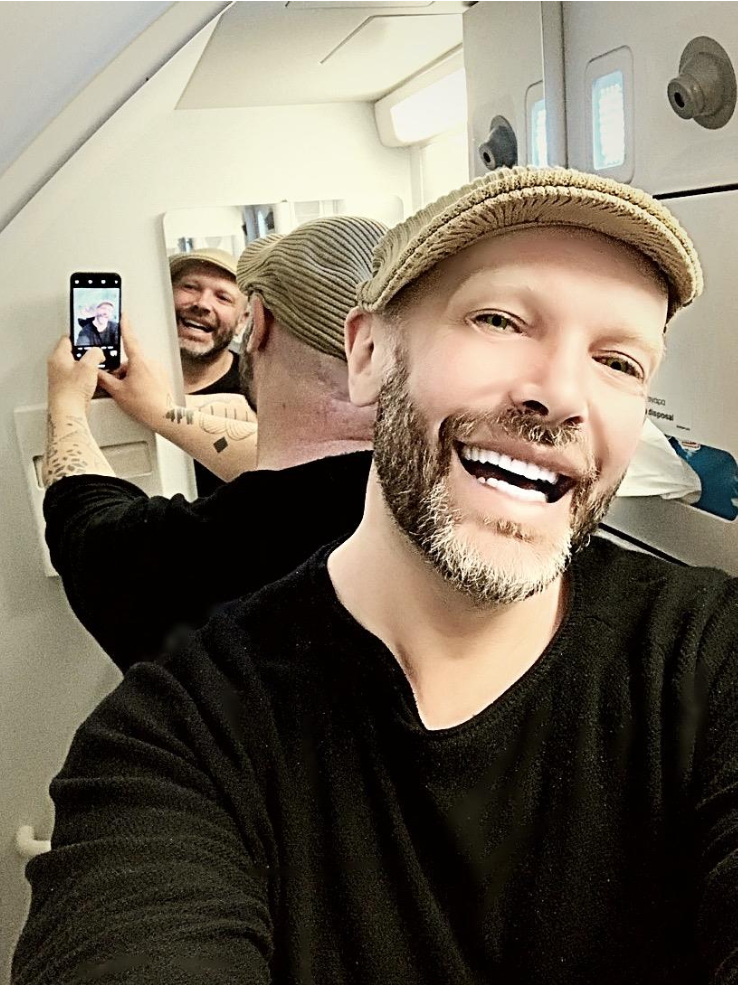
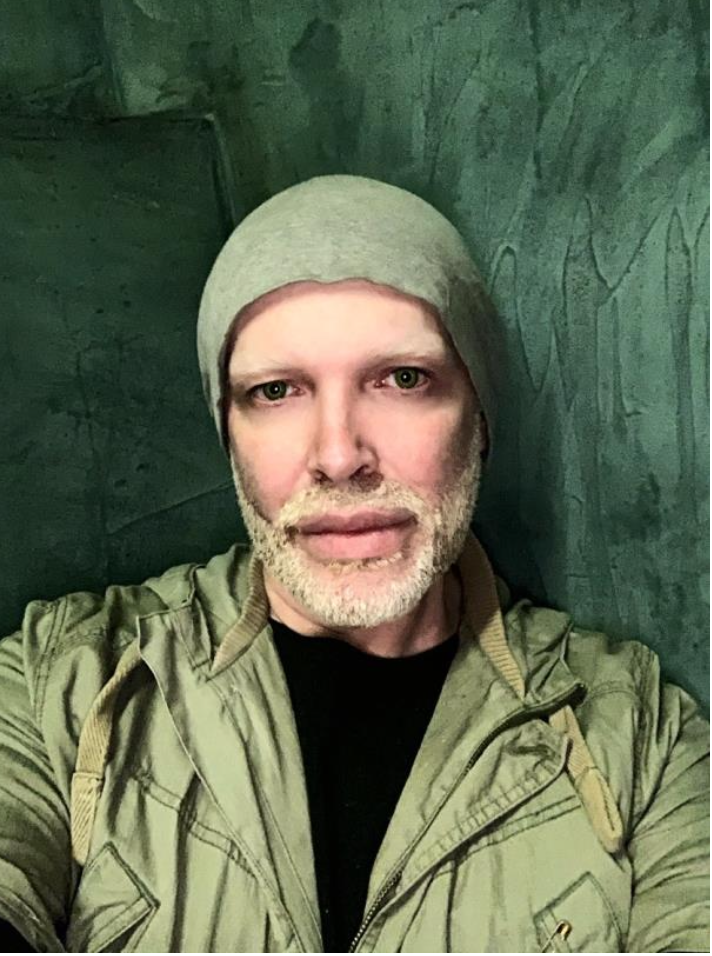
Dimitris Strepkos was born in 1973 in Germany. Having started working as a styling assistant at the age of fifteen, he chose Costume Design at the University of the Arts London as his major. He followed this path after graduation, devoting himself to scenography and designing costumes for the theatre. But much as he adores it, that wouldn’t cover all the vibrating energy and creative spirit that are within him. No wonder then that he got involved in a variety of additional projects, from editing and preparing catalogues to creating video clips and commercials. In 2009 came high time for high fashion and the launch of his brand, Celebrity Skin. The debut collection, “Tim Burton’s Impossible Nightmare,” got him Best Designer and Best Catwalk awards at Athens Xclusive Designers Week, and started his already 15-year- long journey into the world which he’ll probably never get enough of.
His collections are not to be mistaken for any other designer’s; Strepkos is known for combining seemingly basic forms and colour palettes (blacks, nudes, and whites dominate) with imaginative twists and rich ornaments: “everything is done by hand; there’s no single machine at my atelier. Even if you see a simple bodysuit – there’s so much work in it.” Though calling his signature bodysuits “simple” would be an understatement. Suffice it to say that lovers of sequins, diamonds, and fringe will surely find something yummy there. Strepkos’ latest collection: “Daydreaming. A Poem for Katia,” caught my eye during the last Athens Fashion Week, as it definitely stood out, thanks to the more surrealist approach than the other designers presented (Voir’s report on the show can be found here: https://www.voirfashion.co.uk/post/greek-goddesses-come-to-life-highlights-from- athens-fashion-week/). I ask Dimitris if it wasn’t actually richer than any of his former collections. “After 15 years, people know my brand and my aesthetics, and I can do more expensive and luxurious stuff. That’s why it was so over the top [laughs], extra glamorous, extra extravagant.” And as Strepkos says, the inspiration behind his crystal masks, embroidered bodysuits, and layers and layers of tulle are the sensations of everyday life: “I don’t follow trends, I do rather avant-garde items. … I’m a huge art lover – so art is the first inspiration. I love … to see museums, exhibitions, … to read books, go to the theatre, see movies. Secondly, when I travel, I see things, hear music, taste different foods of every country I travel to. All of this gets inside me – and then I create.”
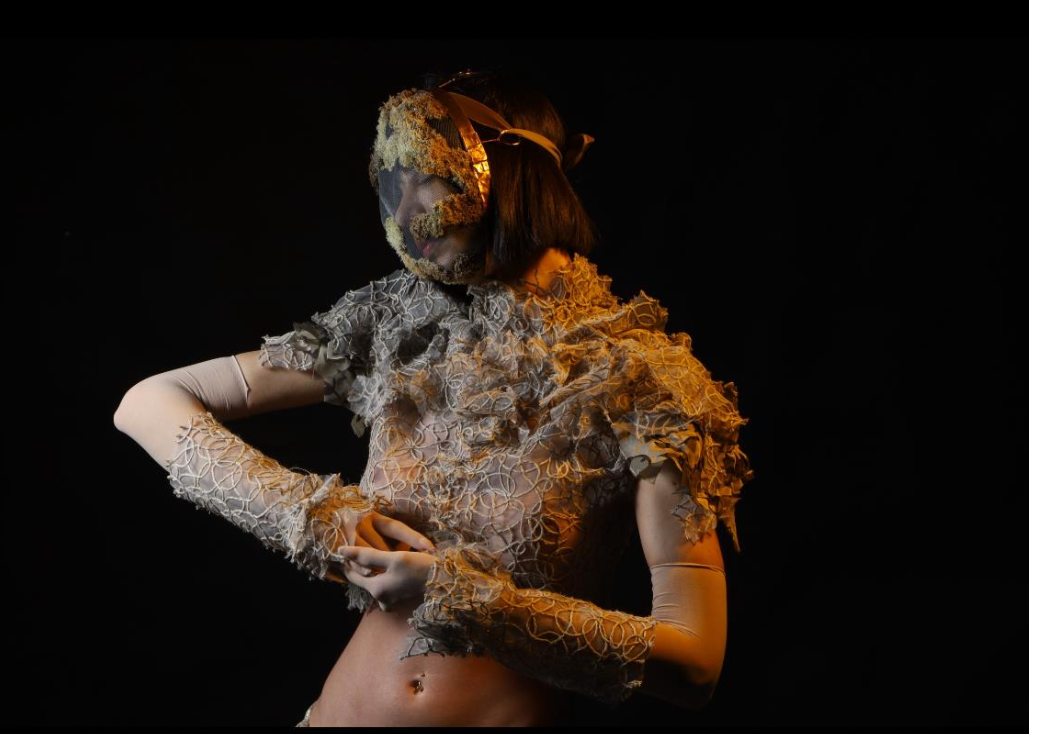
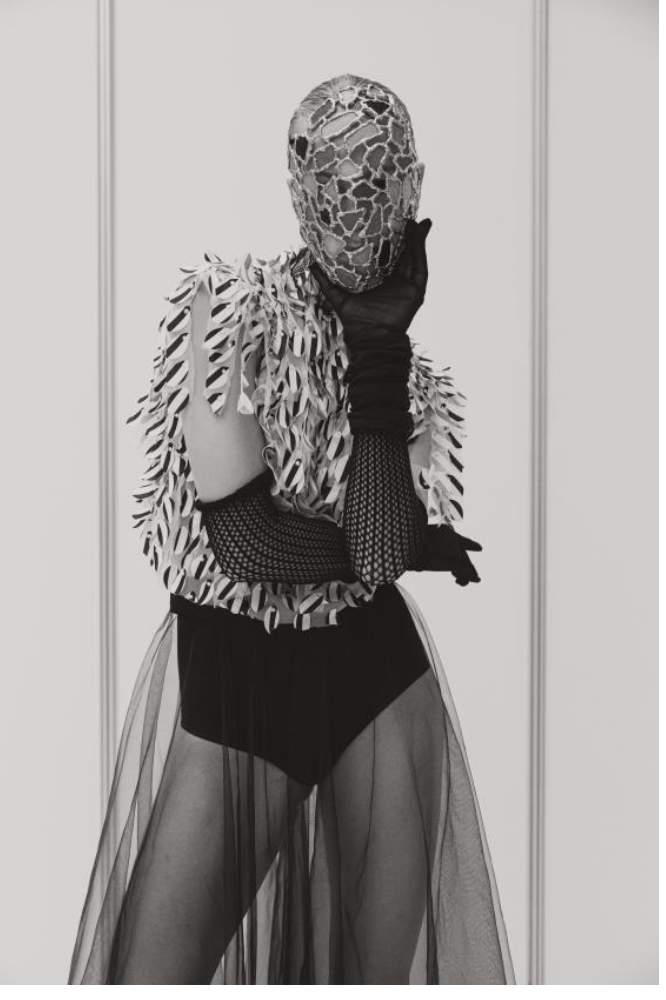
What is central to Strepkos’ shows is the emotional: “it’s not just about the clothes … Doing a fashion show just for 30 amazingly looking models? I don’t really aim for that. I want you to think when you see my shows. I want you to cry, laugh, I want you to remember. I want to create memories for you.” And he does so by bringing his memories onto the catwalk: “[my latest] collection was dedicated to my best friend Katia, who died from cancer … [The show] started with a clip with my personal moments with her, and then the music you were hearing was her favourite song; we used to dance to it a lot,” recalls Strepkos. “Many people didn’t know, but I opened this show with the clothes she was wearing during her last days. And when the show finished, you saw a short clip, saying ‘kisses from heaven.’ She was part of it,” he believes.
Dimitris didn’t only dedicate his anniversary show to his late friend, but actually to all his closest friends, as his take on fashion is about teamwork: “the best things are created in teams, collaboration. Friends are family.” The atmosphere in Celebrity Skin atelier seems to be very inspiring and welcoming to all the family members that are together in this great creative process: “my team works every day for hours, nights, and creates new things. In my atelier, we say ‘you can do anything.’ Anything. With this motto, we create more and more difficult stuff. We don’t go the easy way.” And as Strepkos adds, in Celebrity Skin it’s all about extravagance, constant development and experimentation, aiming higher and higher: “all the money I make, I invest in my work, shows, better materials, more and more expensive collaborations, photographers, better deals. It’s an ongoing process.”
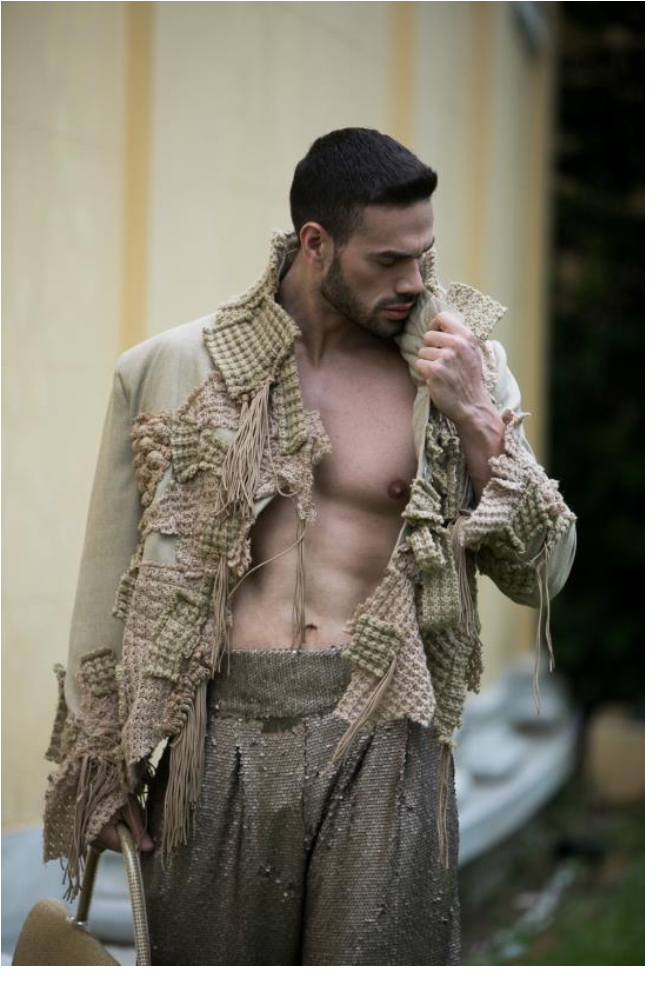
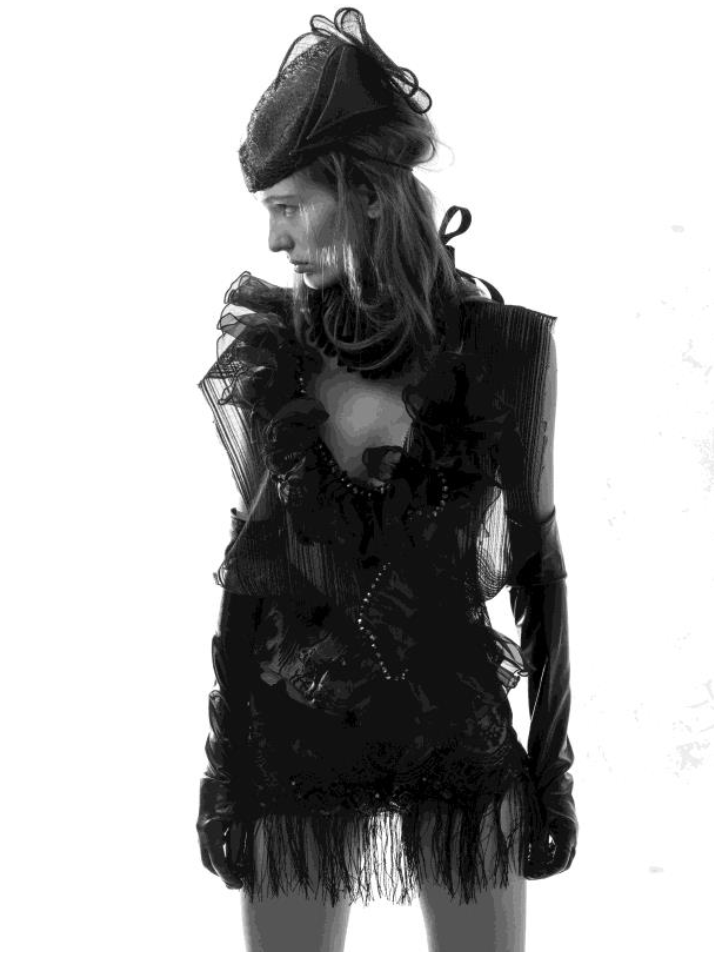
From the talk with Dimitris one can immediately see that he is always hungry for more, and his mind never leaves the fashion mode, even in the simplest everyday situations: “fashion is a way of living. … I love it from the age 5 – I’m 51 now, and I can’t stop it. [laughs] It’s me. … I love catwalks, going to the shows of other designers, backstage, photoshoots, editing – the whole process. Being in the fashion industry is a blessing. It gives me light. … Even when I go to the supermarket and I see a new mustard, I’m like ‘let’s take a photo of this yellow here’ [laughs].” Strepkos sees fashion not commercially, but in a human way – as inborn part of one’s personality and lifestyle: “it’s in the way you think and breathe. You can’t say you do fashion by just wearing Louis Vuitton and going to posh restaurants.” Well, how do you do it then? “Fashion is in that you simply walk, listening to music on your Airpods, and you dream. You need to be a fashion dreamer.” Amen.
But in this deeper approach to the beauty and clothing industry, Strepkos stresses how crucial it is to remain humble, always aiming for a better performance: “you can’t ever say you’ve made it. You’re about to make it. The minute you say ‘I’ve made it,’ you stop being creative.” Hence, apparently when people approach Dimitris, asking which of his clothes he finds the best, he shortly answers: “the ones I haven’t created yet,” with his broad signature smile.
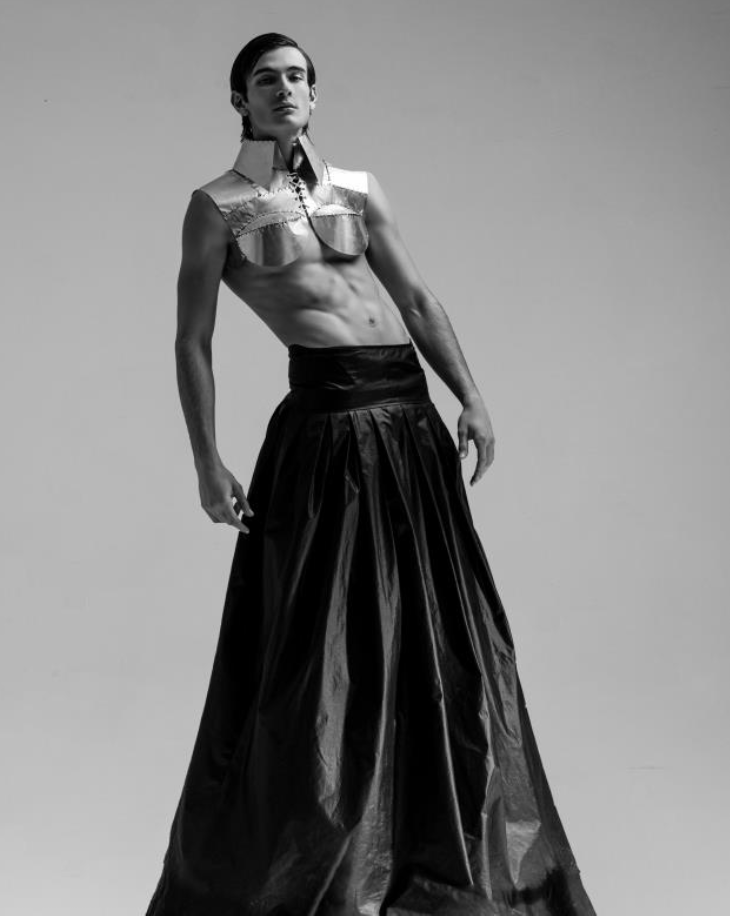
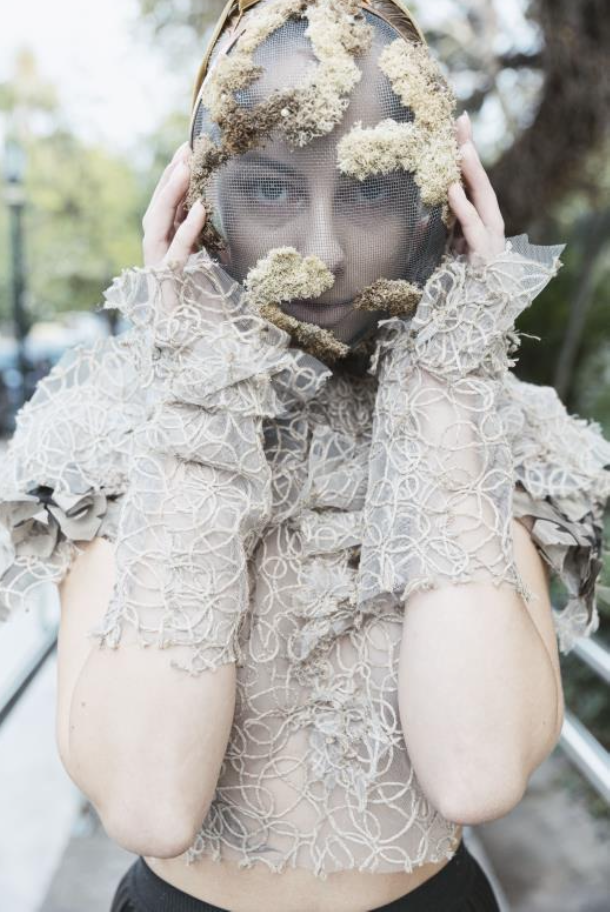
What impresses me the most is probably the creative freedom that is in him and his brand. But the question is whether this freedom has always been there. And even before I finish phrasing it, Strepkos responds with a definitive “yes” and another dose of laughter. He claims to be immensely lucky and grateful for his rich career path, which also made him a self-aware and mature designer: “I [used to be] a fashion show director, also one of the directors at the Fashion Week in Greece, including the last one. … [Setting] up Celebrity Skin 15 years ago, I knew what I was going to deal with. And I knew I wanted to create a brand with identity – to create clothes that didn’t exist yet.” Having observed the industry from various perspectives over the years, Strepkos saw “there [was] a gap,” and as a result, he came up with Celebrity Skin as “a place for people to express themselves.” And it worked. “I have client lists; my sponsors trust me. The brand has grown year by year, and I’m in a good place now.”
The gap Dimitris spotted was filled with clothes which go with the brand’s mottos “Dare to wear” and “Luxury you can afford.” I ask about the elaboration on the former one. “The most important thing is to be yourself. When I say ‘dare to wear,’ I mean, for instance: you have an old pair of jeans – and you combine it with one of my jackets, hats, or bags,” doing some experimentation. “You don’t have to wear a total Celebrity Skin look,” explains Strepkos. “I want [you] to feel free to dig into your closet, find things that you love, maybe something old, from your grandmother – and combine it with my clothes, being yourself. … You are the celebrity, and you create your own skin. This is what I give to the clients.”
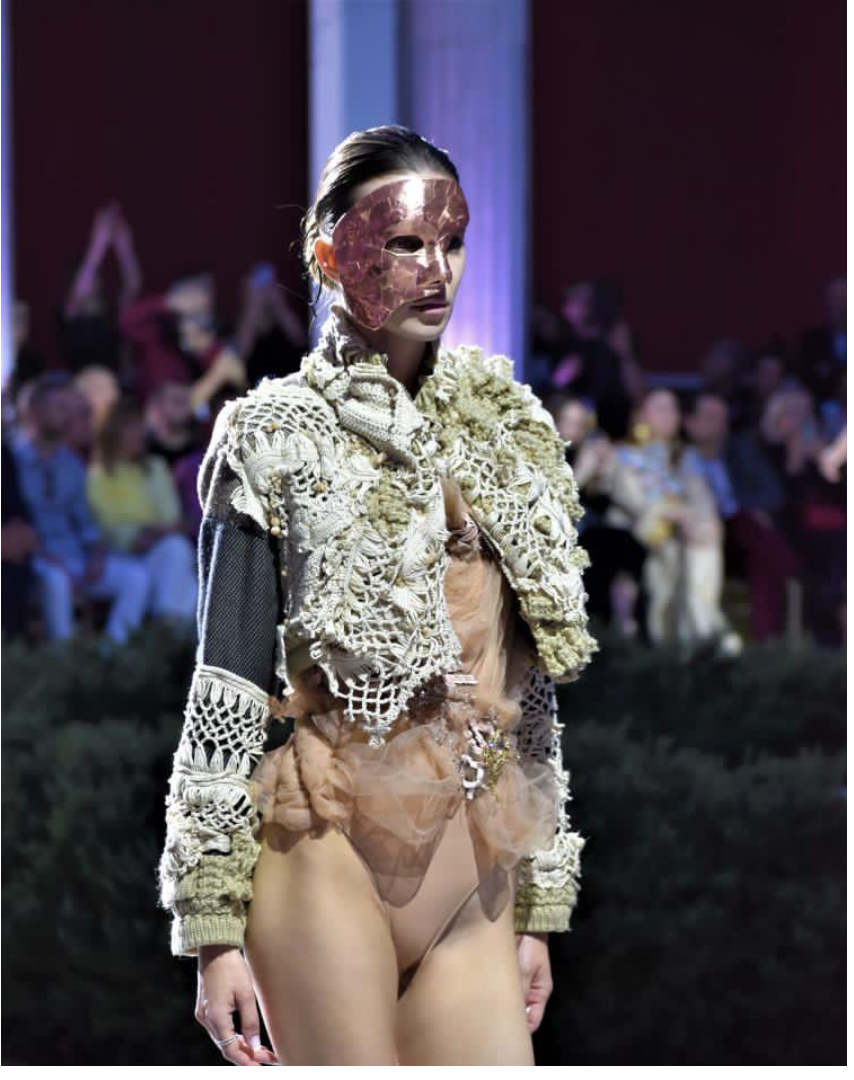
The motto’s explanation introduces the bigger idea behind Celebrity Skin, including the brand’s name itself. After all, Strepkos could’ve opted for his own name when launching the brand, couldn’t he. Why did he go for Celebrity Skin? “For me, celebrity is not a famous person. Celebrity is every person who has identity. [In the shows, the models are of] different body shapes, older, younger, different variety of bodies because I think every person is a celebrity in their own way. And your skin is your clothes. This is what Celebrity Skin actually means – being yourself, [feeling] that your clothes are part of your personality.”
There’s also another, more pragmatic reason for the name choice: “my name is difficult to pronounce in Greece. People would always make mistakes at the beginning [Dimitris imitating the various mispronunciations, laughing] … Celebrity Skin is a more global name, something people can relate to more. … It’s different to say ‘I wear Strepkos Couture’ than ‘I wear Celebrity Skin’ – [at this point it becomes] a movement,” precisely at which Strepkos aimed.
It’s all conceptual. And it brings us back to the last collection, as Dimitris’ take on fashion, additionally influenced by his theatre background, could be felt from the beginning of the show. It was what made me feel that the show differed from the other ones at Athens FW – that it was a performance. “I’m heavily influenced by theatre,” admits Dimitris. “I don’t do fashion just for beauty – I want to create characters and tell a story when I do a catwalk,” he explains, claiming that his collections would be totally different, had it not been for his experience in theatre.
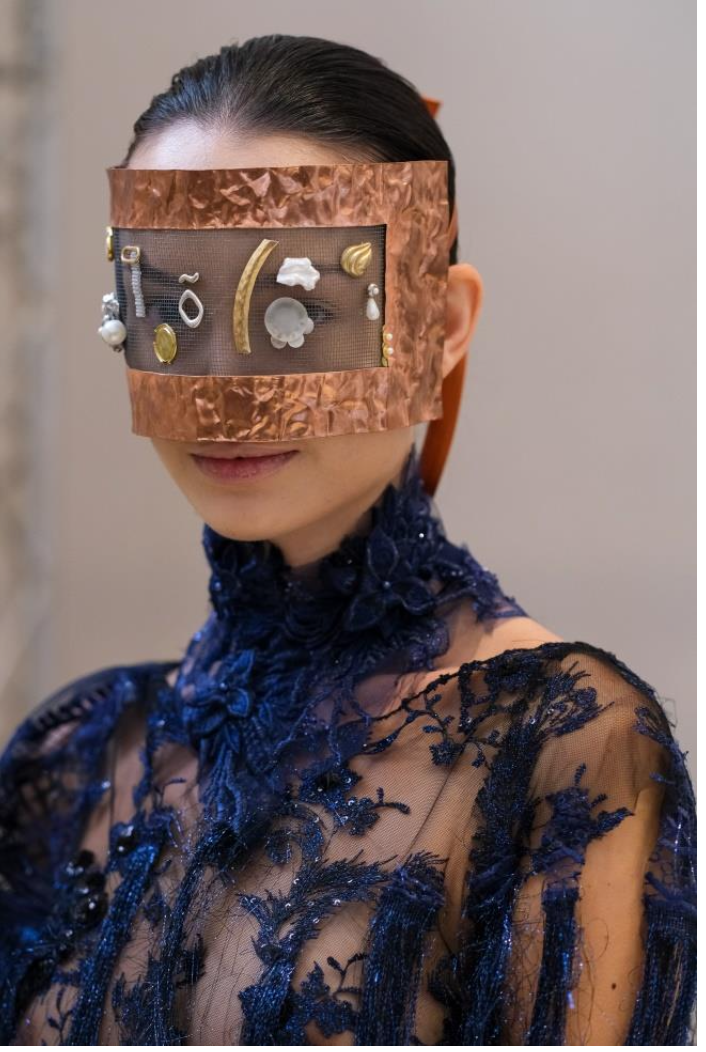
How are, then, the two kinds of the creative process different, when we compare high fashion with theatre costume design? “In theatre, everything that’s on stage is … part of a character – … a character that already exists. There are some boundaries, if you know what I mean. … On the other hand, in fashion you create your own work and the standards. There’s greater liberty. And you can’t do extremely radical things in theatre; it has its limits. Fashion doesn’t.”
That’s possibly the gist of Strepkos fashion – that fashion is liberation. Hence his attitude that, both in the industry and everyday life, one should engage in constant experimentation, non-conformist self-representation, and limitless exploration – primarily to get inspired, and to share the inspiration further: “I go out of my comfort zone every day. [For example, when] I go to another country, and even though I might get food poisoning [laughs, saying “I don’t care, whatever”], I’m like – I’m here, I’m in Morocco, let’s try it. Even if I spit it out afterwards, I’ll still try it,” he assures ironically.” [When] I go to another country, I want to know what they eat and how they cook, see what they have. You’ll never see me order McDonald’s,” he says with a smile.
The open-mindedness, with exposing oneself to new aesthetic and sensual experiences naturally also applies to the collection-creating process: “the first thing I do when I go into my atelier is put music on. I like to listen to operas, musicals, soundtracks. I can’t do anything without music. And I love different kinds of it, also finding some old, forgotten pieces,” says the anti-fan of listening to the same playlist 24/7. Just so you know, if you spot Dimitris out there in the city, don’t be surprised by him holding his phone high in the air – it’s probably him again begging Shazam to give him the title of the song he overheard while crossing the street.
What was on the speakers when working on “Daydreaming. A Poem for Katia”? “I was into the ‘80s during this collection. I was listening to the classics from Sinéad O’Connor because she also died from cancer. … And a lot of Kate Bush, who is my favourite artist. I adore her; I would die for her. [laughs] … When I heard “Cloudbusting” and “Running Up That Hill”, I decided to be a designer. She made me a designer” – believe me, you couldn’t say it more emphatically and emotionally than Dimitris. “Hounds of Love is a milestone for me – it’s like before and after Christ! [laughs],” says member of Kate Bush social media fandom. And honestly, I could perfectly imagine Kate from “Running Up That Hill” or “Wuthering Heights” dancing among Strepkos’ models, all dressed in elegant and feminine, yet somewhat surreal outfits.
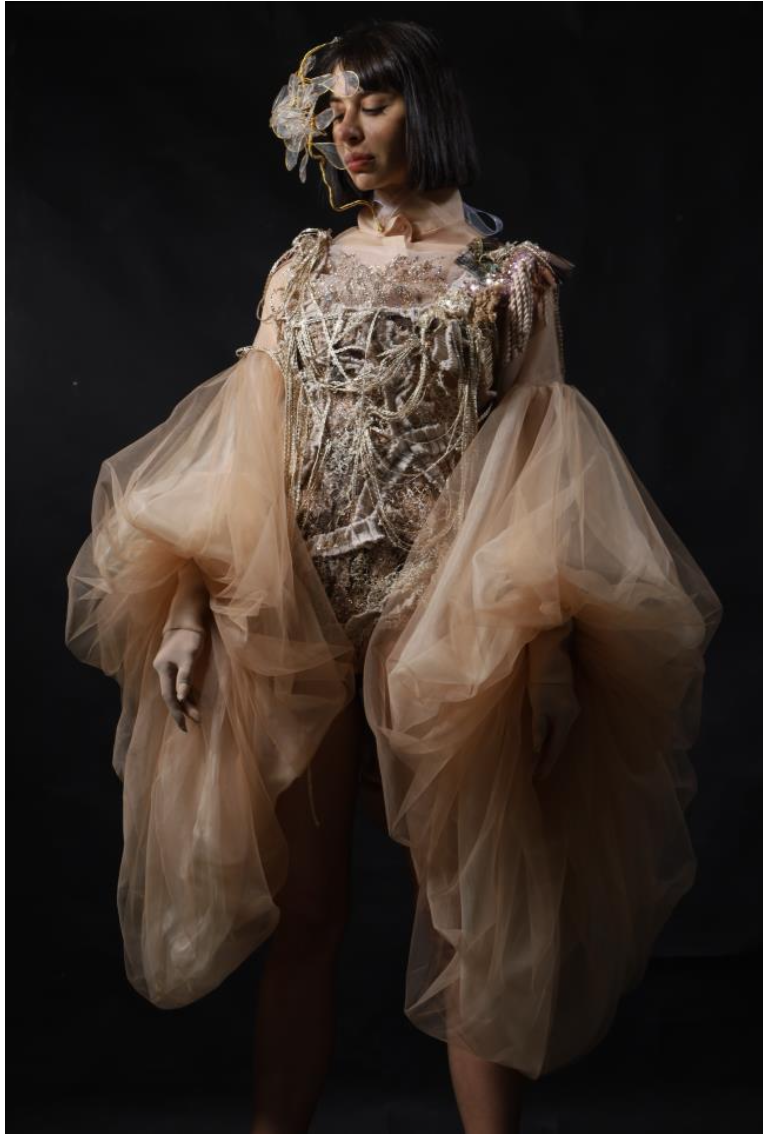
That shows how what you surround yourself with actually impacts your creative work. I go on with the topic, knowing that Strepkos is also a cinema devotee. After all, his first collection was inspired by Tim Burton. What did he watch during the months preceding Athens FW? Apparently Pedro Almodóvar movies, which – with their special depiction of human emotional experience – complemented the ‘80s music in making the mood board, says Strepkos. How do films affect him? “Movies inspire me not because of costumes and what [the actors] are wearing – that’d be superficial – but through the acting. Like, when I see a movie, and it makes me cry or laugh, or think – this is the inspiration; not the aesthetics, but what it makes me feel, what it brings into my life.”
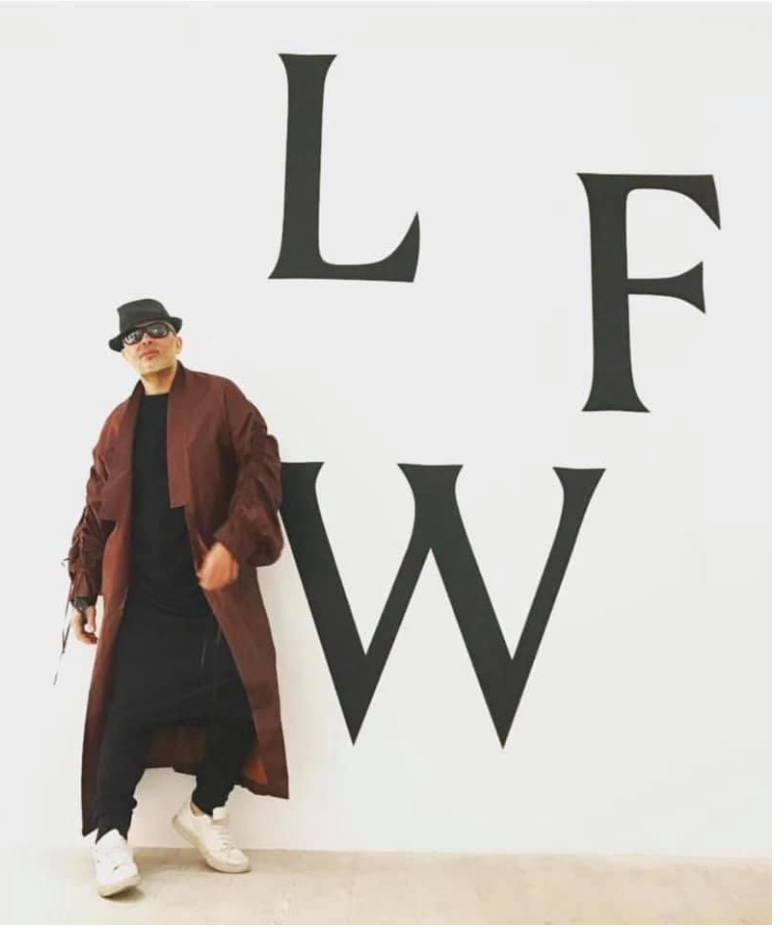
He is always in search. In search for inspo and developing himself as an emotional, creative human being. And an alternative one. That’s why you’ll find him at shows presented by some niche designers, or those that, although already established, still don’t match the level of popularity Prada or Chanel have. “I was at Romanian FW, and there was a designer, an old lady – like, 70 years old. And then I saw her clothes. It was as if she was 19, … her energy was that of a teenager,” recalls Dimitris.
We also discuss Berlin Fashion Week, which surely differs from, for instance, Milan FW, not just in prestige, but also the aesthetics: “I’ve seen amazing works [there]. They have shown passion, and I like that the designers have identity there, which I respect heavily. American stars should also look at Berlin FW to find new clothes; they’d die when seeing the texture, the pattern making, the ideas they have. You see new, radical things – this is fashion. In the more established market, they do it less and less experimental. … But in other fashion weeks, you see new fashion – and you’re like, wow, who’s this, I want to buy this, even though I can’t even pronounce the name,” says Strepkos, smiling, when remembering his visits to Serbian, Romanian, or Dubai FWs.
It only remains to ask when we’re going to get another dose of Celebrity Skin energy. “[My new show is] going to be in March. But I’m doing the campaign in October [already started; follow @celebrityskinstrepkos for more]. … And bits of my new collection will be ready in November.” What can we expect from it? “It’s going to be darker. … I’m coming back to my black black black era. [laughs] I started out as a designer of dark outfits, then I got more colourful, and now I’m coming back to my roots. It’s also more extravagant; I like this vibe now: stones, embellishments, everything!” We’ll definitely keep our eyes open at Voir.
Meanwhile, here’s a little sneak peek of what’s to come!
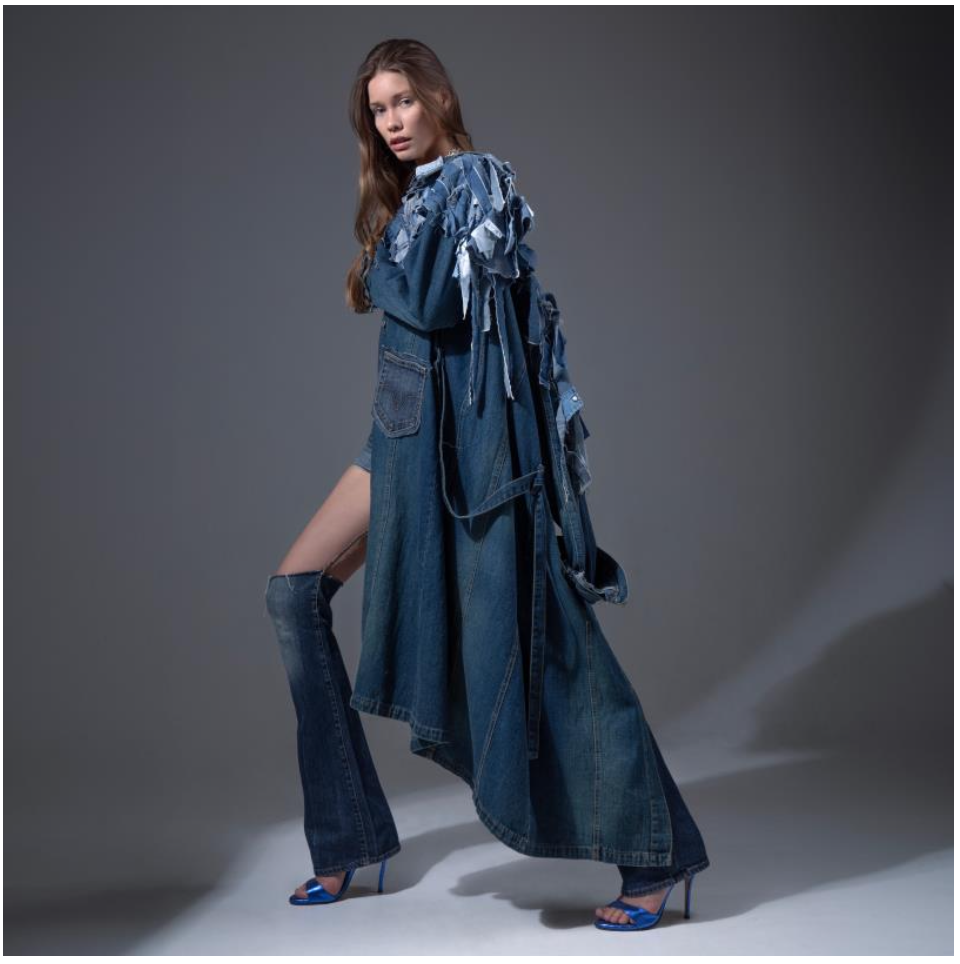
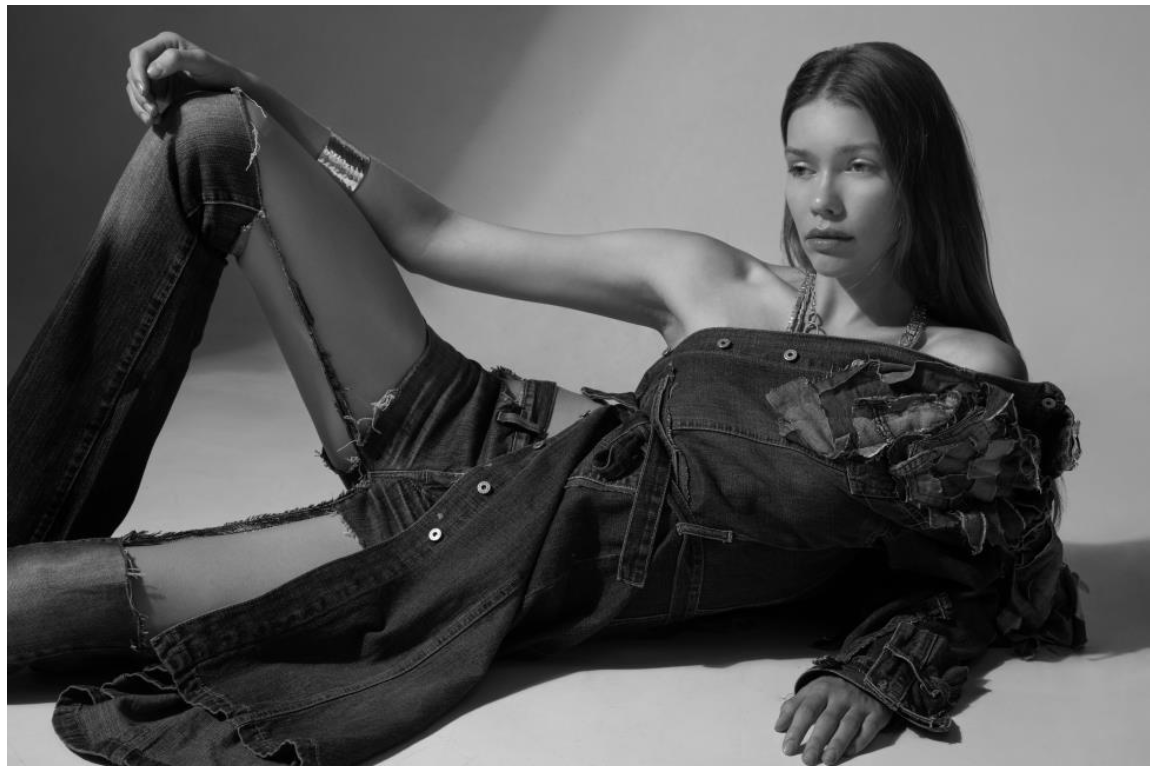
Images courtesy of : Michalis Lavdiotis, Dimitris Margaritis, Fenia Labropoulou, art code productions, Penny K
Written by Julia Sułkowska


